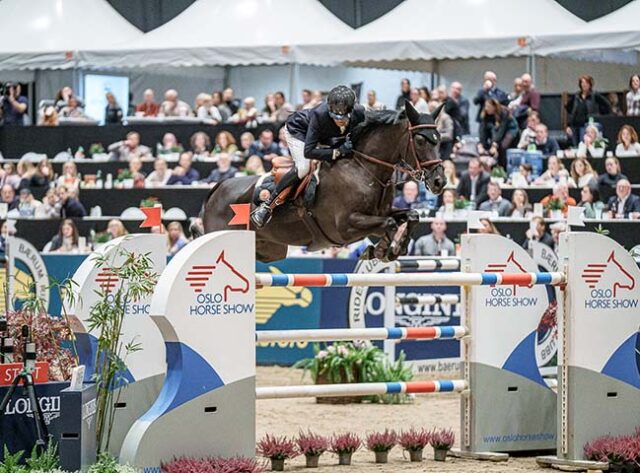
By Adriana van Tilburg
Photography: FEI/Kim Lundin; FEI/Libby Law; FEI/Lukasz Kowalski
Diarado: A very special stallion claimed the champion’s title during the 2007 Holstein stallion selection. It was only in 2003 that the Selle Français Diamant de Semilly was approved for the Holsteiner Verband. So Diarado was responsible for opening the French sire’s door in Germany.
Diarado’s dam line, Stamm 318D2, is one of the oldest Holstein lines still active today in breeding. The 1957-born mare Ruth (Harras - Imposante x Logenschliesser, breeder: Horst Piening) became the foundation mare at Hobe Bernard’s farm. It was no coincidence when Ruth was crossed with Ramiro as Hobe was very familiar with Ramiro’s dam line, which had been bred by the Bahlmann family that only lived 500 metres away from the Bernard family farm. This particular area has been uniquely fertile for breeding stallions and sport horses for decades, with Ramiro’s daughter Golda (1970) becoming a state premium mare and producing the 1m60 jumping mare Caribic (Calando I).
The Golda mare Option (Lord) was another very interesting product, and here began the successful formula that Hobe Bernard created with the stallion Corrado I and his mares. Option was quite small in stature but her Corrado I marriage gave offspring with longer lines, and she produced six horses that jumped from 1m40 to 1m60.
One of her most important offspring was Coriano, who paved the way for Judy Ann Melchior’s international career. As a stallion, he produced some excellent sport horses, with his half sister Valeska IV (Fernando) becoming the dam of Corofino I and II (Corrado I).
Kimberly III (Contender) is also a Coriano half-sister and became a state premium mare, with her first foal being Roxette I (Corrado I). Her second foal became the stallion Crawford, who had a lot of charisma and proved to be a good broodmare sire after he was sold.
Roxette I and Crawford’s third full sister would be Concordia la Silla, a 1m55 jumper under the saddle of Mexican Alberto Michan. With Carthago and For Pleasure, respectively, Kimberly III produced the 1m60 jumpers Fortender and C-Jay 3.
Corrado I
It should be said that Corrado I also played a key role in the Diarado success story, as Klaus Kristensen Thingholm explains: “One of the first horses I bought was a one-and-a-half-year-old Corrado I x Leander mare called Corona. When she was eight years old we sold her to Alison Firestone. I had another mare in the sport, but wanted to find a good broodmare as well as a horse for sport. At that time I had been in talks with Hobe Bernard for a few years to buy a filly from one of his bloodlines. So he called me one summer and said he had two foals for sale by Corrado I. One was a full sister to Corofino I and II and the other was from a relatively unknown part of the bloodline. I bought the unknown part because I liked Corrado I and my gut said this was the right one.
“Corofino’s full sister did not look anything like her brothers. Roxette I was a totally different horse, she was noble, light-moving, and not at all that old-fashioned Holstein model. It was quite an experience when I presented Roxette I as a three-year-old for the mare shows, because everyone liked her. She was noble and elegant, dark, didn't look like a Holsteiner but a Trakehner, she had long legs, and no body in those days. We had to find a stallion for her and I had a friend with whom I discussed Holsteiner blood-lines. Eventually I discussed with him this new ‘zuchtversuch’ [breeding request] in Holstein about new, outside bloodlines. My friend suggested I should look at French bloodlines and I found Diamant de Semilly... To read the complete article you need to be a subscriber
CLICK HERE TO SUBSCRIBE TO BREEDING NEWS
SUBSCRIBERS CAN READ THE COMPLETE ARTICLE BY LOGGING IN AND RETURNING TO THIS PAGE




